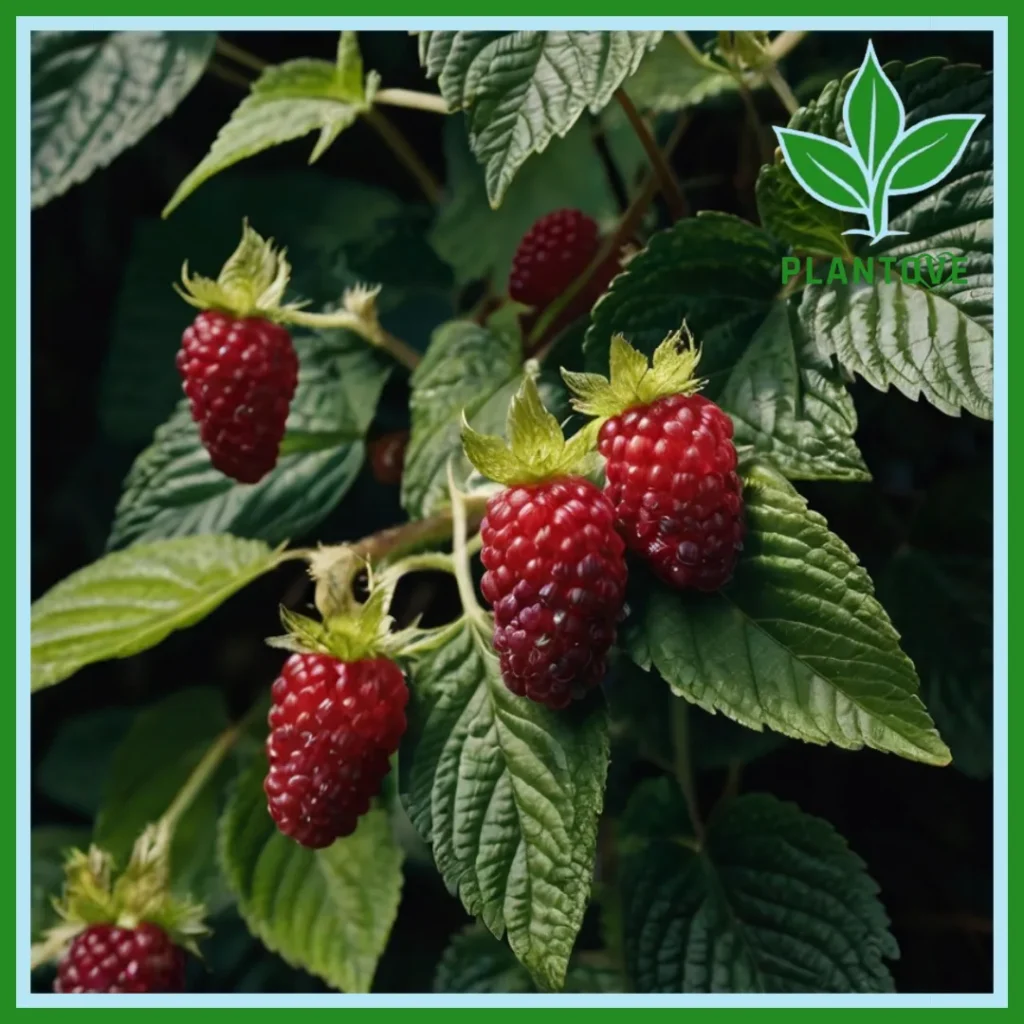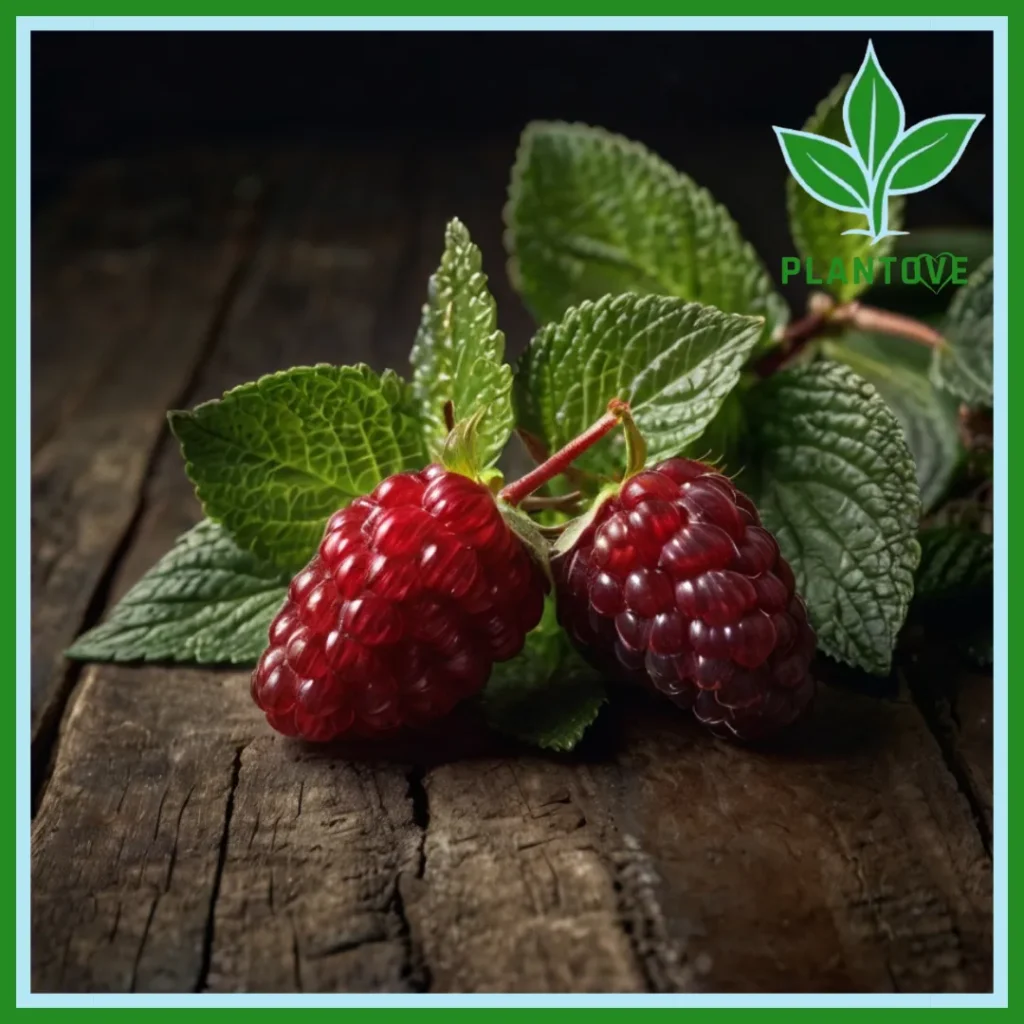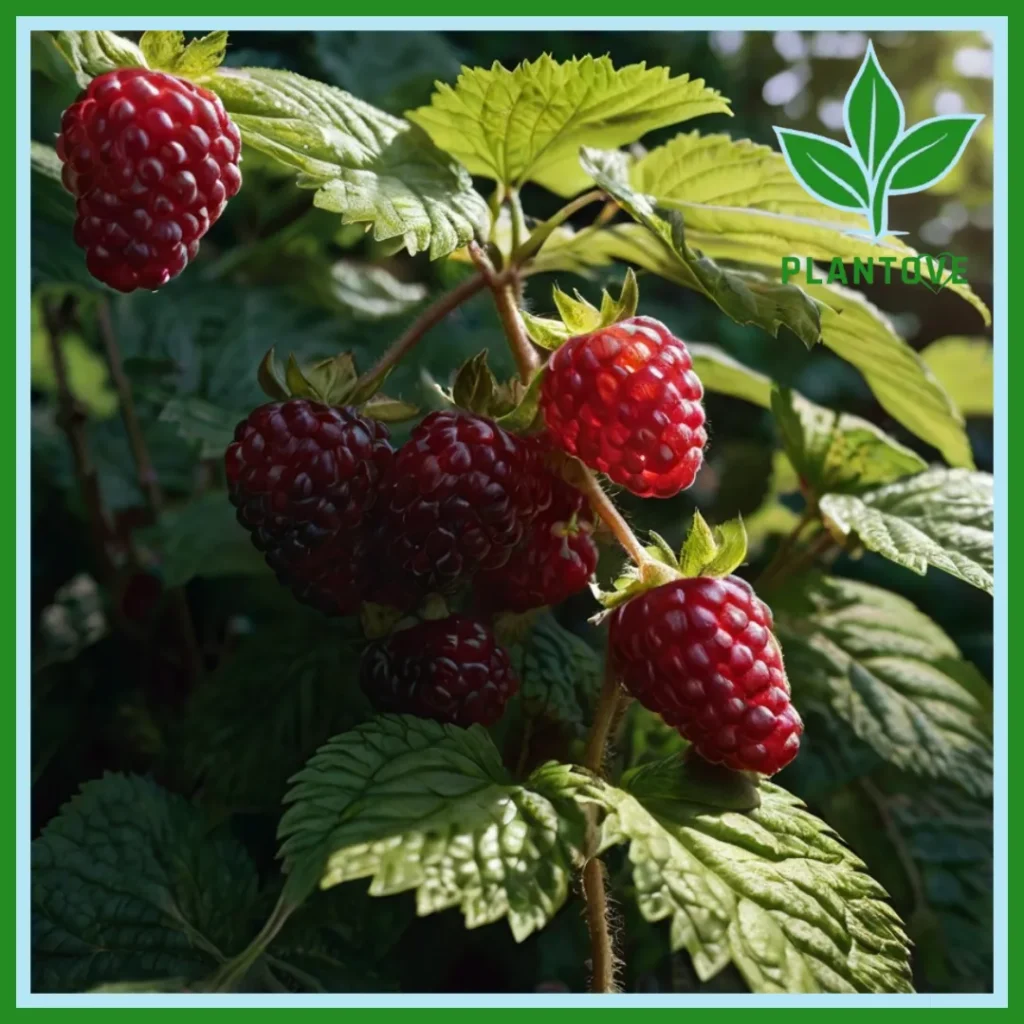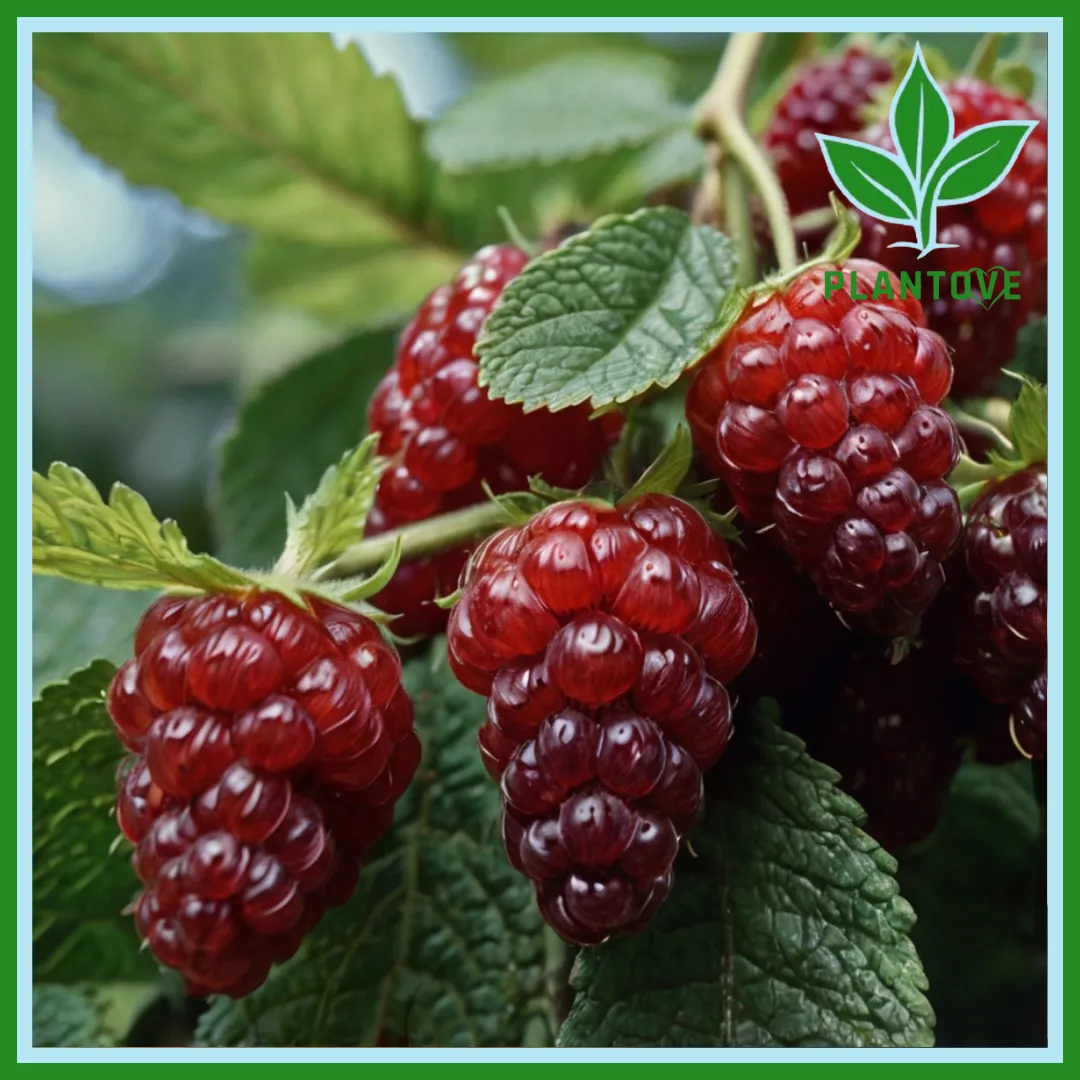Loganberry, a hybrid between a raspberry and a blackberry, is a delicious and versatile fruit that’s easy to grow in the right conditions. Known for its unique sweet-tart flavor and its ability to thrive in various climates, the Loganberry plant is becoming an increasingly popular choice for gardeners, especially those who enjoy growing their own fruits. In this comprehensive guide, we will explore everything you need to know about Loganberry, including its care, common problems, and where to grow it.
What is a Loganberry?
A Loganberry is a type of fruit-bearing plant that is a cross between the raspberry (Rubus idaeus) and the blackberry (Rubus fruticosus). First discovered in the late 19th century by a man named James Harvey Logan in California, the Loganberry plant was created by accident when a blackberry plant was crossed with a raspberry plant. The result is a plant that produces a fruit that looks like a blackberry but tastes like a raspberry, with a tangy and sweet flavor.
Loganberry Plant Care

Growing Loganberry plants is relatively straightforward, but there are a few essential care requirements to ensure they thrive in your garden. Whether you’re planting Loganberries in your backyard or in containers, here’s how to care for them:
Soil Requirements
Loganberries prefer well-drained, loamy soil with a slightly acidic to neutral pH level (around 6.0 to 6.5). It’s important to choose soil that retains moisture but doesn’t stay soggy, as excessive water retention can lead to root rot. If your soil is heavy or clay-based, consider adding organic matter such as compost or well-rotted manure to improve its structure.
Sunlight Requirements
Loganberry plants require full sunlight to thrive, ideally receiving at least 6 hours of direct sunlight per day. The more sunlight they receive, the better they will produce fruit. If you’re planting Loganberries in a location with partial shade, the plant may still grow, but the fruit yield will be lower.
Watering and Moisture Needs
Watering is critical for Loganberry plants, especially during the growing season. Keep the soil consistently moist but not waterlogged. It’s best to water deeply once or twice a week, depending on the weather and soil moisture levels. During the hotter months, the plant may need more frequent watering, but be cautious not to overwater, as this can cause root rot.
Fertilization
To encourage healthy growth and fruit production, fertilize Loganberry plants with a balanced fertilizer once in the spring when new growth starts. Avoid using too much nitrogen, as it can lead to lush foliage at the expense of fruit production. A fertilizer high in potassium and phosphorus is ideal for promoting fruiting.
Pruning
Pruning Loganberry plants is important for maintaining their shape and improving fruit yield. Trim back old canes after the harvest season, cutting them down to the base. This helps to encourage new growth. Regularly remove any dead or damaged canes to allow healthy growth to flourish.
Loganberry Seeds
While it’s possible to grow Loganberry plants from seeds, starting them from seeds can be a slow and challenging process. If you’re starting from seeds, you’ll need to:
- Stratify the Seeds: Place the seeds in a sealed plastic bag with some damp peat moss and refrigerate them for about 30 days to mimic the cold conditions that they would naturally experience in winter.
- Plant the Seeds: After stratification, plant the seeds in seed trays or small pots with well-draining, sterile potting mix. Keep them in a warm, bright area but out of direct sunlight.
- Transplant: Once the seedlings are large enough to handle and the risk of frost has passed, transplant them to their permanent outdoor location or larger containers.
Though growing Loganberry from seeds is possible, most gardeners prefer to propagate them using cuttings or purchase established plants from a nursery, as it guarantees a quicker harvest.
Common Loganberry Problems

Like all plants, Loganberries can face various challenges. Below are some of the common problems you might encounter when growing Loganberries, along with their solutions:
Pests
Loganberry plants are prone to certain pests, including aphids, spider mites, and Japanese beetles. Aphids, in particular, can damage the plant by sucking the sap and leaving behind a sticky residue that attracts mold. To manage pests, it’s essential to:
- Inspect regularly for signs of pests on both the tops and undersides of leaves.
- Use insecticidal soap or neem oil to manage mild infestations.
- Encourage beneficial insects, such as ladybugs, to keep pest populations under control.
Diseases
Loganberry plants are susceptible to fungal diseases such as powdery mildew and root rot. To prevent fungal issues, follow these best practices:
- Ensure proper drainage to prevent standing water around the roots.
- Space plants adequately to improve airflow, reducing the risk of fungal growth.
- Prune away infected areas to prevent the spread of disease.
For powdery mildew, applying a fungicide or a natural solution like a mixture of baking soda and water can be helpful in treating affected areas.
Thorns
Some varieties of Loganberry plants have thorns, which can make harvesting the fruit difficult and uncomfortable. If you’re not fond of thorns, look for thornless varieties when purchasing plants.
Low Fruit Yield
If your Loganberry plant isn’t producing as much fruit as you’d like, several factors could be at play. It could be due to insufficient sunlight, poor soil conditions, or improper pruning. Review the care requirements and ensure you’re meeting all the plant’s needs.
Where Do Loganberries Grow?

Loganberries thrive in areas with temperate climates, particularly regions that don’t experience extreme heat or cold. They’re commonly grown in the Pacific Northwest, where the cool, moist climate is ideal for this fruit. However, Loganberries can also grow in other parts of the United States, provided that they receive enough sunlight, moisture, and care.
When planting Loganberries, choose a spot with good air circulation, full sun exposure, and soil that drains well. Loganberries can grow in USDA hardiness zones 5-9, making them suitable for a variety of climates.
Can Loganberries Be Grown Indoors?
Loganberries can be grown indoors, but it requires some attention to detail. If you’re growing Loganberries indoors, ensure they receive enough sunlight. Since Loganberries are typically outdoor plants, growing them indoors might limit their growth unless they’re placed in a bright location with direct sunlight for at least 6 hours a day. Additionally, make sure the indoor space is large enough for the plant’s sprawling growth.
Indoor Loganberry plants may also require supplemental lighting, such as grow lights, to mimic natural sunlight. You will need to water them regularly but avoid overwatering, as indoor humidity levels can vary.
Conclusion
Loganberries are an exceptional fruit for gardeners who want to try something a bit different from the usual berries. They offer a deliciously unique taste and are relatively easy to grow when given the proper care. With the right soil, plenty of sunlight, and regular maintenance, your Loganberry plant can thrive for years to come. Whether you’re interested in growing them outdoors in your garden or indoors, Loganberries provide an excellent way to enjoy homegrown fruit.
By following the tips and guidelines in this article, you’ll be well on your way to cultivating a healthy Loganberry plant that will produce delicious fruit year after year. Remember to keep an eye on pests and diseases, prune regularly, and provide your plant with the proper conditions, and you’ll have a bountiful harvest of Loganberries in no time.

